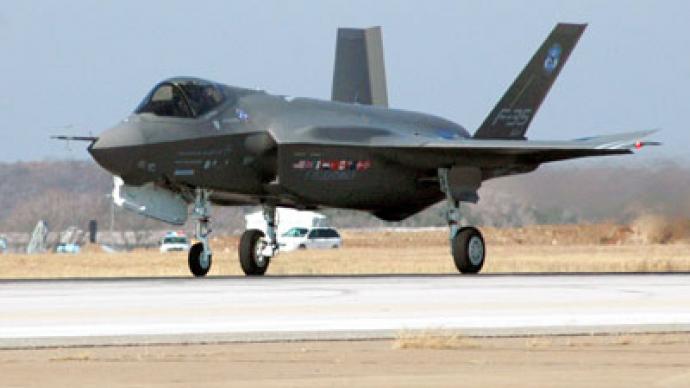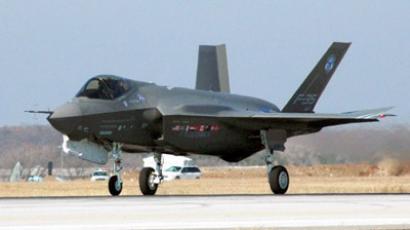Marine Corps get first F-35, but with no weapons or the right gear

Lockheed Martin has started to send F-35 Joint Strike Fighter jets to the Marine Corps, but the finishing touches on the Pentagon’s most expensive weapons acquisition ever are still years away.
The Marine Corps Air Station in Yuma, Arizona received their first F-35 JSF on Friday, but the pricey airplane won’t be pulverizing targets at subsonic speeds anytime soon. The Pentagon hopes that the Yuma base will soon be home to the Marine Fighter Attack Squadron (VMFA) 121, the first arsenal of the aircraft that will be deployed for military missions. Meanwhile, however, Lockheed Martin, the Defense Department contractor tasked with completing an order for the planes that is perpetually pushed back as more and more obstacles amount, has more work to do.Wired.com’s Danger Room notes that even if the first F-35 has been sent to the station in Yuma, that doesn’t mean it’s read to fly. The plane’s computerized logistical system, flight software and special helmet still aren’t ready to roll out, and without every intricate detail perfect, the plane can’t be put to use.In September, the incoming director of the F-35 program blasted Lockheed Martin for blowing through the resources the United States had allowed for the program, which was slated from the beginning to be the priciest weapons purchase for the Pentagon yet. Several years down the road, though, complications are keeping the future of the craft so uncertain that other nations have already reconsidered their contracts with Lockheed pending how America’s purchase ends up. “There is no more money and no more time in the development of this program,” Maj. Gen. Christopher Bogdan said during an address that month at the Air Force Association's annual conference outside of Washington, DC. “That is it. We will not go back and ask for any more.”So far the F-35 program has set the Pentagon back $395.7 billion, or 70 percent more than they initially planned on spending. But while a finished product is still years down the road, the primitive model being touted around the Yuma base is apparently being used to show that the strikers will soon be ready, hell or high water. In the meantime, though, there isn’t much they can do with the craft.The North County Times out of nearby San Diego, California, reports:“Tactical training may begin within a year after 10 to 12 pilots are qualified to fly. But the squadron won’t be able to deploy until it has jets with block 2B software revisions, which Lockheed said it expects to deliver in mid-2015.”According to Wired, that 2B update is just now entering testing, but an end-date is uncertain given that 24 million lines of code — nine million more than originally planned — will have to be audited before putting the plane and its pilots up in the sky to shoot down targets at speed and precision currently unmatched by any other aircraft. Meanwhile, Pentagon flyers must rely on a helmet system developed by Lockheed competitors BAE Systems until the ideal accommodations can be brought up to snuff. Once those kinks are worked out, the only thing stopping Yuma from receiving the first fleet of fully-functional F-35s is a perfect weapons mechanism still in the works and, at this rate, a few hundred million dollars more worth of research.














